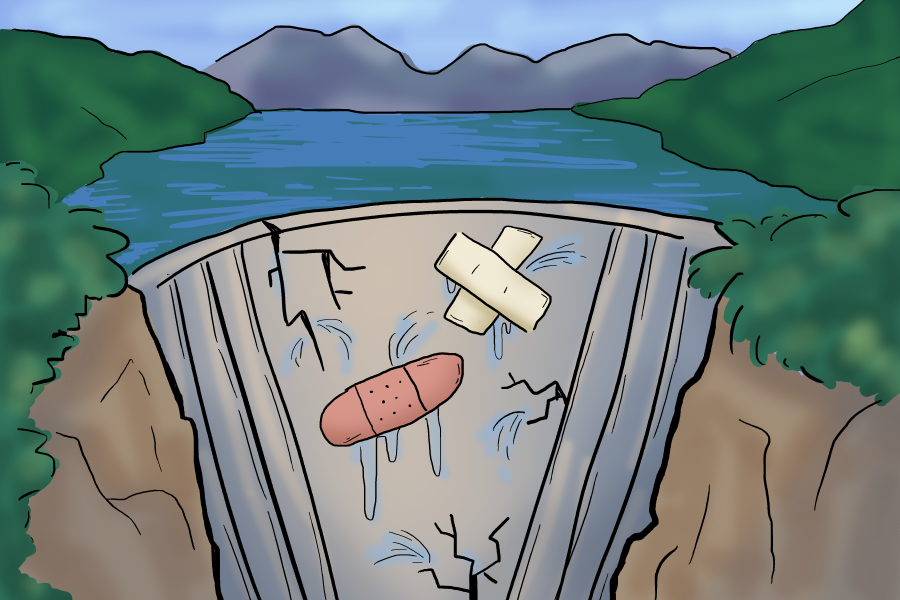California residents scrambled to pack their belongings into their cars before sitting trapped on roads for hours after warnings of an impending dam failure barreled through their community. Last year both spillways at the Oroville Dam, one of the largest in the country, failed, prompting an evacuation order for nearly 200,000 people downstream. Last week, costs reached $870 million in the near-failure of the Oroville Dam, with an additional $1 billion in various legal claims filed by property owners.
Sixty-eight percent of regulated California dams have emergency action plans. Texas boasts 81 percent, but both still lag behind a state such as New York, which touts a near-perfect 97 percent of dams with emergency action plans. Texas has had a mixed, at times unacceptable, history with dam safety and oversight. The American Society of Civil Engineers’ 2017 Infrastructure Report Card gives Texas a D for dams.
In 2013, the Texas Legislature passed House Bill 677, which exempted lower-risk, smaller dams in mostly rural counties from safety regulation. If they meet the criteria — which includes population, amount of water, location, private ownership and low- or mid-level hazard classification — they qualify for exemption until any one of those five criteria change. As a result, roughly 45 percent of Texas dams are now exempt from state safety regulation.
Lawmakers opted to exempt some dams at the significant hazard classification level from any oversight, those dams making up about 10 percent of the overall number exempted. Texas has three hazard classification levels: low, significant and high. Low means that loss of life is unlikely and minimal damage is expected. Significant means one to six deaths possible and appreciable economic losses expected. High means seven or more deaths and excessive economic loss anticipated.
Federal standards set by FEMA state that “one or more” deaths rank as a high hazard classification. The federal significant hazard classification is assigned to dams whose breach would probably not cause loss of life but may cause economic losses. Texas’ standards fall outside of FEMA standards, setting a seemingly arbitrary choice of six people as an acceptable cutoff. In effect, we’re saying six deaths isn’t that bad; seven, however, is extremely bad.
The potential loss of any human life should garner serious oversight, and those 10 percent — 231 dams — put up to 1,300 people in danger and should not be exempt from inspections and regulation. Texas should adopt FEMA classifications.
Furthermore, as with much of Texas’ infrastructure, dams are deteriorating quite quickly. The estimated cost to rehabilitate dams is more than $800 million, with an additional amount in the billions needed to update aging dams. These figures are growing larger and more unfeasible by the minute, in a state that already struggles to fund existing obligations. Slow and steady progress in the form of a state grant program could work to mitigate the risk associated with the 500-plus inadequately built, dangerous dams, at the very least.
Considering 111 dam incidents have resulted from heavy rains in the past three years alone, Texans need to take dams more seriously. Our continued neglect of dams and public safety unnecessarily jeopardizes our state’s residents. Texas dams are a ticking time bomb; it’s only a matter of time before state action comes too little, too late.
Verses is a Plan II and environmental engineering freshman from San Antonio.





















